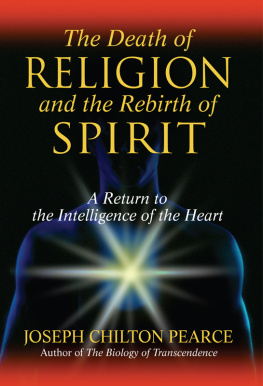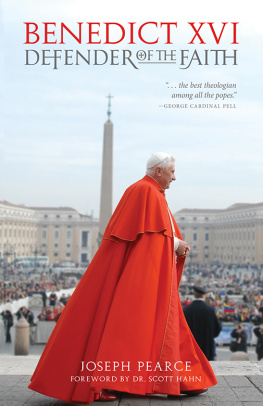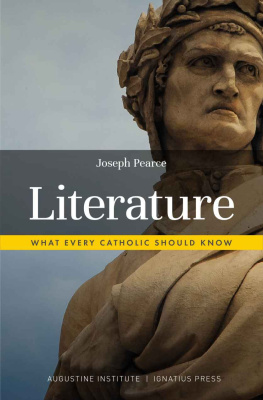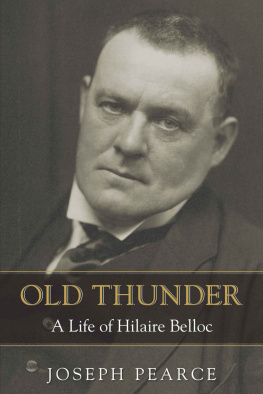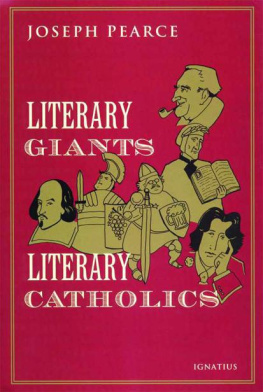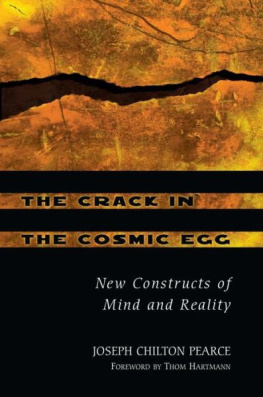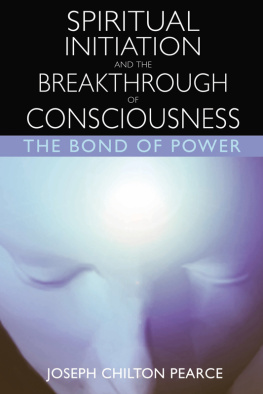The Death of
RELIGION
and the Rebirth of
SPIRIT
A Return to the
Intelligence of the Heart
JOSEPH CHILTON PEARCE

Park Street Press
Rochester, Vermont
To
Robert Sardello

ACKNOWLEDGMENTS
M y grateful thanks to editors Elaine Cissi and Vickie Trihy for their splendid work, making rough passages smooth, my crooked logic straight, and my wayward prose comprehensible. While pointing up contradictions, inconsistencies, comfortable prejudices, half-truths, and outright errors, they made it all challenging and fun, a playful dialogue of reciprocal elucidationsa writer could ask for no more.
Special thanks to J. W. Travis, M.D., who gave so generously of his time to help prepare the final edits of this book. Travis and his wife have formed the Alliance for Transforming the Lives of Children, a world wide movement, and their Wellness Workbook, encompassing the best of common sense and sane medical advice, is deservedly a classic.
Robert Sardello was a major influence on the final shape of this book, which I had thought finished when someone sent me Sardellos Love and the World. I have borrowed liberally from this extraordinary work, which, along with his recently published Silence, has seriously influenced my way of thinking and personal life.
As I did for my book The Biology of Transcendence, I have borrowed heavily from the Institute of HeartMath, and I am grateful to them.
My very recent discoveries of David Loye and Riane Eisler forced additional last-minute changes in this book, and to their insights and knowledge I am grateful, both personally and on behalf of this book.
Several people struggled through early rough drafts of this work: Bill and Win Sweet, Bob and Kathy Simmons, Robert Sardello, Michael Mendizza, and Jon Graham, of Inner Traditions Bear & Company, are among them. Their encouragement in spite of the vagueness and occasional vapid nature of early drafts was encouraging. My long-suffering wife put up with my disappearance into the computer for long periods (some three years) during this writing, read the earlier drafts of the work, and offered practical suggestions for making it more readable and reasonable.
I have avoided those nuisance footnotes, op. cit., and et al. clutters that generally attend scholarly or academic efforts and toward which neither this book nor I have pretensions. The bibliography lists works particularly influential in this writing, however, whether or not I mention these in the text.
Please note that throughout the book and particularly in part 2, I use the word him for infant/child and the word her for mother. I tried him/her and he/she in my earlier writing to avoid any chauvinism, and it was a pain for both myself and the reader.
Part One

Culture as a Negative Field Effect and the Phenomenon of Mind

INTRODUCTION TO PART ONE
C ultures have risen and fallen throughout history, and when they fall, it has always been by their own hand. Whether or not by our own hand, our culture is rapidly waning as a widespread anxiety waxes. Philosopher Susanne Langer claimed that our greatest fear is a collapse into chaos should our ideation fail, and culture is a major plank in our ideation. Threaten our fabric of beliefs, practices, and perspectives that make up the system of our cultural ideation and our very sense of self is threatened.
As culture is a major plank in our ideation, religion is a major plank in our culture, and it, too, is on the wane, which has given rise to fundamentalism as a political-cultural force. Arising from the adherents to all religious systems, old and new, fundamentalists fuel the fire of the very cultural collapse we fear.
At the same time, our current scientific technologies, which have become an even more powerful plank in our cultures ideation, damage us on every handphysically, mentally, and morallyand because their work is indirect and subtle, it goes unrecognized. As we used to turn to religion as our hope and solace, we now turn to science, a religion with its own brand of protective fundamentalism. Both of these religions, scientific and ecclesiastic, are equally destructive to spirit, mind, and nature and equally give rise to violence and civilitys decline.
While we do have a culture, our actions are hardly civil, and in spite of our many religions, a spiritual void seems epidemic. The mounting tide of violence toward self, earth, and others intensifies, while sporadic movements toward a spiritual renewal fragment in uncertainty. The impending death of religion, however, could bringor at least allowthe rebirth of spirit.
In his book The Ascent of Humanity, Charles Eisenstein graphically shows that a compulsion within us for prediction and control is a fundamental flaw in our human venture. Every plank in the cultural ideation handed down to us rests on prediction and controlof ourselves, each other, nature, and the world. We assume that such a complex system of compulsive drives is instinctive and natural and we cant really think outside the boundaries of prediction and control even to question that which seems illogical. Our whole cultural fabric of mind arises from, sustains, and is sustained by this compulsion for prediction and control.
We think of prediction and control as high-water marks of human intellect arising from a basic instinct to survive. But this compulsion is itself the force that leads to our demise, though stating it so baldly makes it incomprehensible to our cultural mind-set. In fact, we automatically rationalize to protect ourselves against such a notion and tend to screen out works and writing that bring it to our attention.
In his books Love and the World and Silence, Robert Sardello has taken the work of the late Austrian philosopher-scientist Rudolf Steiner to a new level of evolutionary thought. Steiner, a Ph.D. from a German university, is one of the great and woefully neglected minds of recent centuries. That Steiners astonishing output has remained largely obscure and unknown almost a century after his death is a cultural effect that shields from us that very opening of mind toward which he himself pointed. Yet Steiners lack of recognition and acceptance holds a key to our dilemma, for he leads beyond that cosmology of prediction-control that makes up the very warp and woof of contemporary thought.
A strikingly similar case in point is the history and scope of Charles Darwin as revealed in David Loyes recent book Darwins Lost Theory of Love. That David Loyes work on Darwin has also been largely ignored, in spite of the acceptance and acclaim of Loyes earlier works, strangely parallels the history of Darwins own work as well as that of Rudolf Steiner.
In his book, Loye describes how Darwin, in the latter part of his life, went beyond the accepted thought of his time to explore biologys relevance not only to a theory of evolution but also to what we know today as the fields of psychology, anthropology, brain science, and moral philosophy. The Descent of Man, Darwins final work (which I will hereafter refer to as Darwin 2), is distinct from, yet complementary to, his earlier and widely accepted study, The Origin of Species (which I will refer to hereafter as Darwin 1).
Both are works of brilliance and insight, though Darwin 2 had a markedly different reception than did Darwin 1. Loye examines the strange fact that the last work of Darwin has been ignored, while his first has long been an accepted part of modern academic and scientific thought. In this contrast lies not just the evolutionary history of humankind but also an explanation for why we tremble at the gates of disaster today.
Next page
